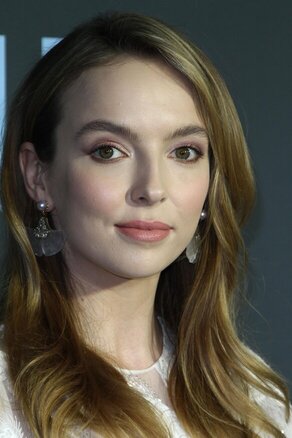President of the Hanoverian Union
| President of the Hanoverian Union | |
|---|---|
 Flag of the Hanoverian Union | |
| Executive Council of the Hanoverian Union | |
| Style | Madam President |
| Status | Head of the Hanoverian Union |
| Seat | Royal Palace of Brussels |
| Appointer | Executive Council of the Hanoverian Union |
| Term length | Life tenure |
| Formation | 6 December 1946 |
| First holder | Frederick |
| Website | hupresident.org |
The President of the Hanoverian Union is the ceremonial head of the Executive Council of the Hanoverian Union, the legislative body of the Hanoverian Union, a politico-economic union comprising the United Kingdom, the Netherlands, and Luxembourg. Founded in line with the organisation's establishment on 6 December 1946, the officeholder has traditionally been the reigning monarch of all three member states, currently Queen Alexandra, who took office following her father's abdication on 13 October 2017. In addition to having no term limit, the role of the president itself is largely ceremonial, with the organisation's day-to-day governance mostly being done by the chairman. Nonetheless, the president is ultimately responsible for presiding over the organisation's Brussels Summit meetings, and therefore, its executive council, and ultimately, for approving the organisation's "Trinational Plan", a set of policies making up the organisation's official agenda.
The seat of the president is the Royal Palace of Brussels in Brussels, Netherlands, which also serves as the administrative center of the organisation. It is also located nearby the Palace of Laeken, which houses the Executive Council, the organisation's legislative body, as well as nearby the Belvédère Château, the seat of the Supreme Court.
Formation
In the lead-up to the organisation's establishment on 6 December 1946, in addition to the executive roles of chairman and deputy chairman, there was initially some debate over whether a ceremonial role, akin to that of a constitutional monarch, should exist for the organisation, as well as its name. Initially, it was suggested by British politician and former prime minister Winston Churchill that the role of the organisation's ceremonial held should fall onto that of the common monarch of all three countries, given that all three member states share a common monarch from the ruling House of Hanover. Ultimately, it was then suggested by then-Prime Minister of Luxembourg Pierre Dupong that the organisation should have a more "modern" outward appearance, and henceforth, the organisation's ceremonial head should instead be titled president, a suggestion that was eventually accepted by all three parties, with King Frederick therefore becoming the organisation's first and founding president until his death in 1957.
Since then, there have currently been four presidents who have presided over the organisation, with the current officeholder being Queen Alexandra, who took office following her father's abdication on 13 October 2017, becoming the first woman to hold the office.
Succession
While officially a non-hereditary role, by convention, the office has always fallen to the new reigning monarch immediately upon succeeding their predecessor, a practice that is meant to avoid any sort of partisanship between the organisation's members while also ensuring that the office itself remained strictly impartial and non-political akin to that of a constitutional monarch, hence avoiding an unnecessary political deadlock should the president disagrees with a proposed agenda.
When a new president is chosen, either as a result of the death of their predecessor or, as was the last two cases, an abdication of the office, the new president and the respective deputy leaders of all three member states who together form the Executive Council would then jointly converge at the organisation's administrative center, the Royal Palace of Brussels, where in the presence of the respective representatives of the organisation's three member states, the newly-sworn president would read the customary oath in which he or she promises to "uphold the organisation's sacred and esteemed values" while also promising to "maintain and defend the unity of the organisation from any internal or external threats". Then, soon after the oath was fully read out, the respective representatives of all three member states would proceed to simultaneously exclaim "Godspeed, [Mister/Madam] President!" as an act of homage to the new president who would then officially conclude the ceremony with a toast by raising a cup in unison with the other members present while uttering the organisation's motto of "Unity under the Crown".
For the occasion, a round mahogany table is used to seat the president, chairman, deputy chairman, and secretary-general, with the shape itself intended to emphasise a state of parity and equality among those seated. When the occasion begins, the individual seated opposite of the president would receive the original oath letter encased in a rectangular-shaped glass box which would then be presented over for the new president to read from with the reader often having one hand placed gently onto the box and the other raised to shoulder level as the oath is read.
Functions
While strictly a ceremonial role, the president is nonetheless responsible for, among other things, overseeing the organisation's Brussels Summit meetings that are held every five years, its legislative body, known as the Executive Council, while also giving the final approval to any official agenda proposed and agreed upon by a majority of members of the Executive Council.
Technically, while the president does appoint the chairman, deputy chairman, and secretary-general of the organisation, such appointments are largely ceremonial in practice given that the three offices traditionally rotate among the union's three member states and coupled with the fact that the officeholders are usually deputy prime ministers from each of the three countries who are otherwise chosen by their respective citizens in a general election. On the other hand, the president personally appoints the chief justice, who heads the organisation's supreme court, as well as the five other justices, although this process itself involves the role of an independent commission in determining a suitable successor in the case of a vacancy so as to avoid any sort of politicisation in the process while also ensuring the judicial body's independence from any partisan politics.
In addition, the president also reserves the right to "refuse" the implementation of any official agenda but only in the sense that the president could only ask for it to be "reviewed" if necessary rather than being able to reject it outright in which parliamentarians are given approximately a month in what is known as the "consultative window" to debate and agree upon a revised version of the agenda. Therefore, once a revised version of the agenda is proposed, the president would conventionally give his or her approval of it, thereby allowing the agenda to be officially implemented.
Residence
The president's seat is the Royal Palace of Brussels in Brussels, Netherlands. Officially completed in 1934, the building is located near the Palace of Laeken and the Belvédère Château that houses the Executive Council and the Supreme Court respectively. Together, all three buildings collectively form the "Grand Brussels Plaza" which encompasses the buildings representing all three of the organisation's branches of power, namely executive, legislative, and judicial branches.
The president, along with the chairman, deputy chairman, and the secretary-general, are all usually driven in identical black Audi A8 vehicles, all three of which are identical in colour and fully armoured so as to ward off any security threats with the heavily-tinted windows providing an extra layer of security by completely obscuring the passengers inside from outside view. For that purpose as well, neither of the three vehicles have any discernable license plates.
Miscellaneous
Despite being the inaugural officeholder, Frederick only personally oversaw one of the organisation's summit during his lifetime as he passed away months before he could oversee a second one. Otherwise, his immediate successor Charles III oversaw a grand total of ten summits during his forty-five year tenure.
As of current, Charles III is the oldest-lived president at ninety-four years old and the longest-serving at forty-five years long while current officeholder Alexandra is the youngest president at twenty-seven years old although not necessarily the shortest-serving which instead goes to Frederick whose tenure lasted for roughly four years prior to his death.
List of Presidents of the Hanoverian Union
| Name Tenure |
Duration of tenure | Portrait (Coronation, when available) |
Age |
|---|---|---|---|
| Frederick Edward Frederick William 6 December 1946 – 7 July 1957 |
10 years, 214 days | 
|
61 years, 227 days |
| Charles III Charles Frederick William Louis 7 July 1957 – Abdicated 15 January 1997 |
39 years, 193 days | 
|
94 years, 46 days |
| Thomas Thomas William Frederick Francis Albert Charles 15 January 1997 – Abdicated 13 October 2017 |
20 years, 272 days | 
|
67 years, 5 days |
| Alexandra Alexandra Katharine Charles Nicole Lauren Elizabeth Thomas 13 October 2017 – Present |
7 years, 71 days | 
|
28 years, 225 days |
